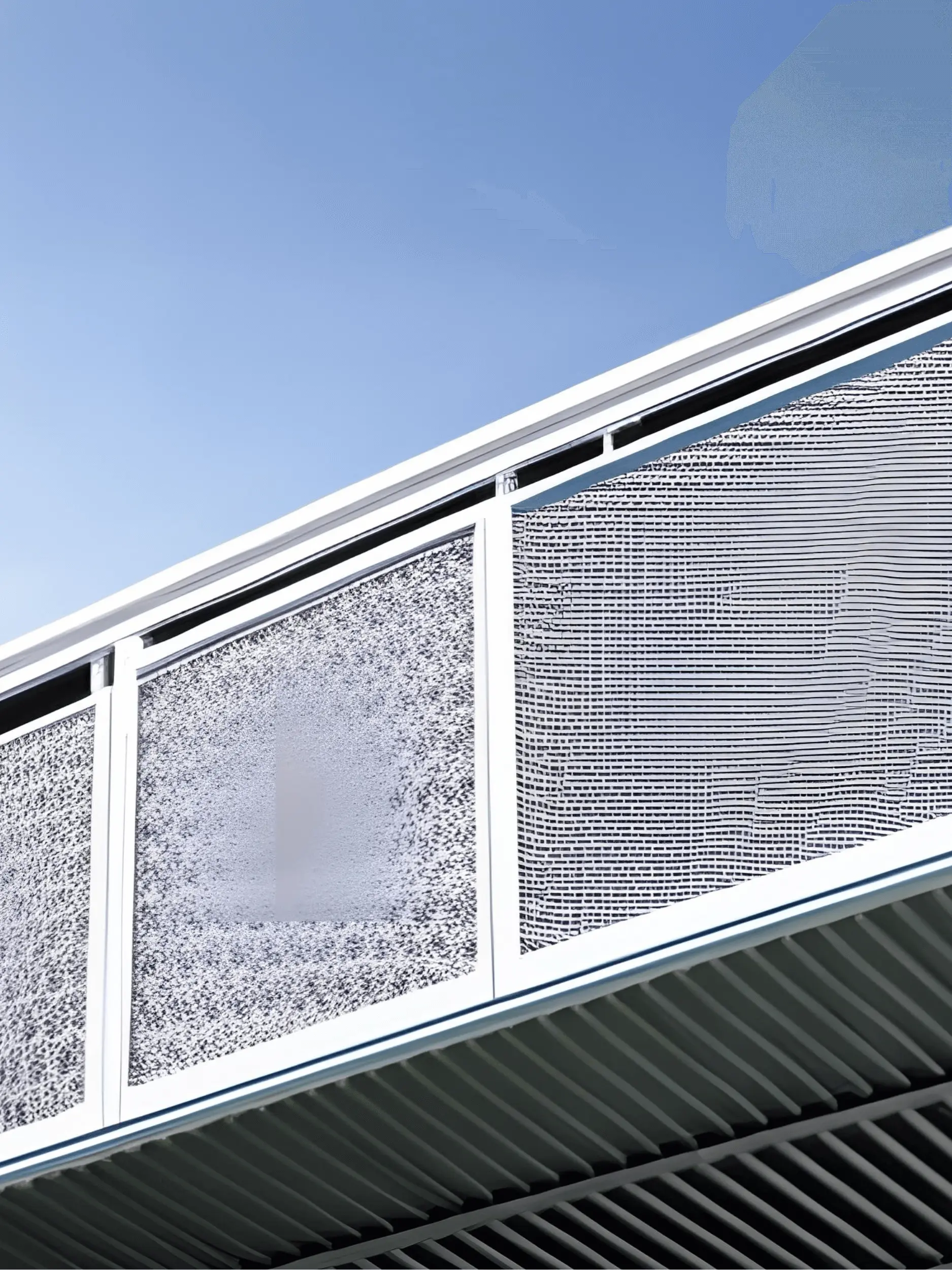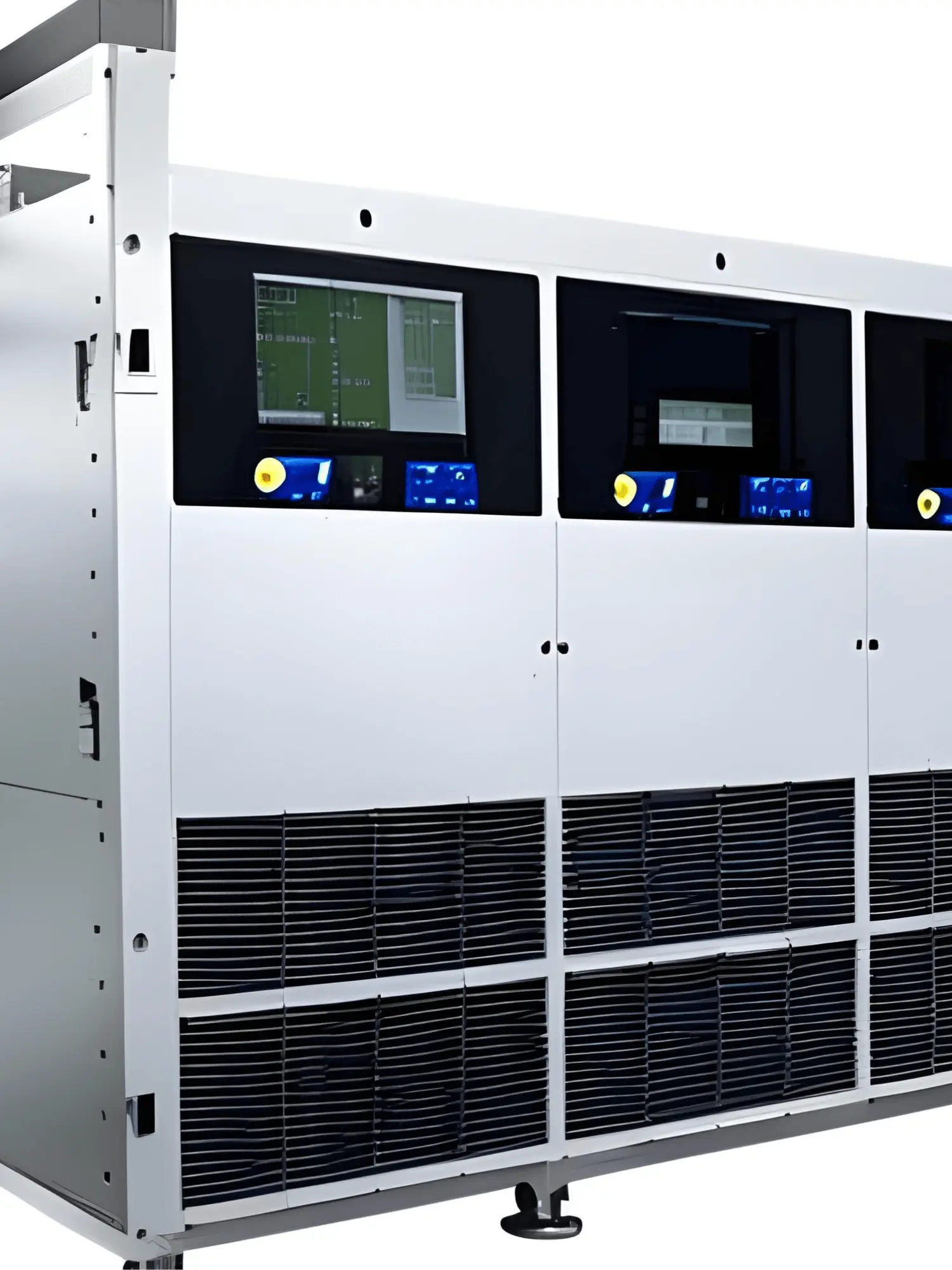Air Handling Unit
Determining Air Handling Units' (AHUs') Potential ✨: Increased Comfort and Indoor Air Quality 💪🌱
Air handling units (AHUs) are necessary to ensure suitable indoor air quality and temperature conditions inside such organizations. AHUs condition and filter the air to ensure that people live in a comfortable and healthy environment. In this post, we’ll look at the main uses for AHUs and stress the importance of energy efficiency in these setups. Understanding AHUs and their energy-saving capabilities can lead to better indoor air quality and less energy usage.🏢💡🌬️
Air handling unit (AHU) components) 💡

Air Handling Units: Enhancing Indoor Air Quality 🌬️
When it comes to creating a healthy and comfortable indoor environment, air handling units (AHUs) play a crucial role. These units are responsible for maintaining clean and healthy indoor air by effectively filtering out airborne particles, dust, allergens, and pollutants. AHUs achieve this through a combination of components that work together seamlessly. 🛡️
Air Handling Unit (AHU) Components

Filters: The core of an AHU's air filtration system are filters. They purify the air, making sure that only pure, fresh air is circulated inside the structure. The best air quality is achieved by using a variety of filters, including pre-filters and HEPA filters, to trap particles of different sizes. 📢️

Fans: Fans included within AHUs are in charge of circulating air within the device. These fans make sure that conditioned air is properly circulated and distributed, providing uniform temperatures and air quality throughout the facility. 💨

Coils: AHUs' ability to regulate temperature depends on coils. When necessary, heating coils raise the air's temperature while cooling coils reduce it. The refrigeration or heating system of the building is connected to these coils, making effective temperature control possible. 🧊️

Dampers: The AHU's airflow is controlled by dampers. They enable precise ventilation control by adjusting the ratio of recirculated air to outside air. Dampers help maintain ideal indoor air quality levels and increase energy efficiency by controlling the air intake. 🚪

Humidifiers and Dehumidifiers: AHUs can include humidifiers and dehumidifiers to maintain ideal humidity levels. With the use of humidifiers, dry air may be made more comfortable and free of health risks brought on by extreme aridity. Dehumidifiers eliminate extra moisture, stopping the formation of mold and keeping the atmosphere pleasant. 🌌️ 💧
An air handling unit's (AHU) operation 💪 🚬
Understanding the working functions of an air handling unit (AHU) is essential for comprehending its functionality and optimizing its performance. In this section, we will delve into the fundamental operations of an AHU and understand how it performs tasks such as filtration 📢️, temperature control 🌡, humidity regulation 🌌️, and air distribution 💨. Let's explore the inner workings of an AHU and its significance in maintaining indoor air quality and comfort. 💪 😌
Working Functions of an Air Handling Unit (AHU) 🔧 🌡
-
 Filtration 📢️:
The filtering method happens first in an AHU's operation. Through a series of filters, the air is sucked into the AHU through the intake. By capturing and eliminating dust, allergies, and other impurities, these filters make sure that the air provided to the building is hygienic and clean.
Filtration 📢️:
The filtering method happens first in an AHU's operation. Through a series of filters, the air is sucked into the AHU through the intake. By capturing and eliminating dust, allergies, and other impurities, these filters make sure that the air provided to the building is hygienic and clean.
-
 Conditioning 🌡:
The conditioned air is then subjected to temperature and humidity regulation after filtration. When necessary, cooling coils bring the air temperature down while heating coils bring it back up. For the best humidity levels, humidifiers and dehumidifiers alter the moisture content. The regulated and pleasant interior climate is made possible by this conditioning procedure.
Conditioning 🌡:
The conditioned air is then subjected to temperature and humidity regulation after filtration. When necessary, cooling coils bring the air temperature down while heating coils bring it back up. For the best humidity levels, humidifiers and dehumidifiers alter the moisture content. The regulated and pleasant interior climate is made possible by this conditioning procedure.
-
 Air Distribution 💨:
Through ducting and vents, the air is dispersed throughout the structure after conditioning. Air is moved through the system by fans inside the AHU, providing uniform dispersion across the whole structure. Every room or location benefits from regular temperatures and air quality thanks to proper air distribution.
Air Distribution 💨:
Through ducting and vents, the air is dispersed throughout the structure after conditioning. Air is moved through the system by fans inside the AHU, providing uniform dispersion across the whole structure. Every room or location benefits from regular temperatures and air quality thanks to proper air distribution.
-
 Control Systems 🛠:
AHUs include sophisticated control systems that keep track of and manage a number of variables, such as temperature, humidity, and air volume. Through the use of these control systems, the AHU is made to function effectively and adapt to the shifting demands of the building's inhabitants. Integration with building automation systems enables centralized management and remote AHU performance monitoring.
Control Systems 🛠:
AHUs include sophisticated control systems that keep track of and manage a number of variables, such as temperature, humidity, and air volume. Through the use of these control systems, the AHU is made to function effectively and adapt to the shifting demands of the building's inhabitants. Integration with building automation systems enables centralized management and remote AHU performance monitoring.
-
 Maintenance and Servicing 🔧:
AHUs must have routine maintenance and service in order to work at their best. Periodically inspecting, cleaning, or replacing filters is required to keep them functioning properly. Check for any issues or debris accumulation in the coils, fans, and dampers. The AHU's lifespan is extended and its optimal performance is ensured through routine maintenance.
Maintenance and Servicing 🔧:
AHUs must have routine maintenance and service in order to work at their best. Periodically inspecting, cleaning, or replacing filters is required to keep them functioning properly. Check for any issues or debris accumulation in the coils, fans, and dampers. The AHU's lifespan is extended and its optimal performance is ensured through routine maintenance.
Applications of Air Handling Units (AHUs) 💻
-
 Commercial Buildings 🏢:
Commercial structures including offices, malls, hotels, and restaurants frequently employ AHUs. They provide a comfortable and effective atmosphere by ensuring that people have excellent indoor air quality and appropriate temperatures.
Commercial Buildings 🏢:
Commercial structures including offices, malls, hotels, and restaurants frequently employ AHUs. They provide a comfortable and effective atmosphere by ensuring that people have excellent indoor air quality and appropriate temperatures.
-
 Industrial Facilities 🏭:
AHUs are used in industrial environments to ensure clean air and regulate temperature and humidity levels. AHUs are crucial to the compliance with stringent air quality laws and the maintenance of safe working conditions in sectors including pharmaceuticals, manufacturing, and food processing.
Industrial Facilities 🏭:
AHUs are used in industrial environments to ensure clean air and regulate temperature and humidity levels. AHUs are crucial to the compliance with stringent air quality laws and the maintenance of safe working conditions in sectors including pharmaceuticals, manufacturing, and food processing.
-
 Healthcare Facilities 🏥:
To stop the transmission of airborne illnesses and maintain a clean environment, air quality is crucial in healthcare institutions. In order to guarantee the circulation of clean and contaminant-free air, AHUs with cutting-edge filtering systems are utilized in hospitals, clinics, and labs.
Healthcare Facilities 🏥:
To stop the transmission of airborne illnesses and maintain a clean environment, air quality is crucial in healthcare institutions. In order to guarantee the circulation of clean and contaminant-free air, AHUs with cutting-edge filtering systems are utilized in hospitals, clinics, and labs.
-
 Educational Institutions 🏫:
AHUs are used by educational organizations including schools and colleges to create a comfortable and healthy learning environment. AHUs improve the general wellbeing of students and employees by regulating temperature, removing allergens and pollutants, and ensuring fresh air circulation.
Educational Institutions 🏫:
AHUs are used by educational organizations including schools and colleges to create a comfortable and healthy learning environment. AHUs improve the general wellbeing of students and employees by regulating temperature, removing allergens and pollutants, and ensuring fresh air circulation.
-
 Data Centers 📡:
Data centers generate significant heat from servers and equipment. AHUs are employed to cool and regulate the temperature in these facilities, ensuring the efficient and reliable operation of critical equipment while maintaining optimal energy efficiency.
Data Centers 📡:
Data centers generate significant heat from servers and equipment. AHUs are employed to cool and regulate the temperature in these facilities, ensuring the efficient and reliable operation of critical equipment while maintaining optimal energy efficiency.
-
 Cleanrooms 🔬:
The computers and equipment in data centers produce a lot of heat. These facilities use AHUs to cool and adjust the temperature, assuring the efficient and dependable functioning of vital equipment while preserving the highest possible energy efficiency.
Cleanrooms 🔬:
The computers and equipment in data centers produce a lot of heat. These facilities use AHUs to cool and adjust the temperature, assuring the efficient and dependable functioning of vital equipment while preserving the highest possible energy efficiency.
-
 Hospitality Industry 🏨:
Comfort and happiness of guests are given top priority by hotels, resorts, and other hospitality businesses. By preserving cozy temperatures, guaranteeing fresh air circulation, and eliminating smells and pollutants, AHUs help to create a relaxing atmosphere.
Hospitality Industry 🏨:
Comfort and happiness of guests are given top priority by hotels, resorts, and other hospitality businesses. By preserving cozy temperatures, guaranteeing fresh air circulation, and eliminating smells and pollutants, AHUs help to create a relaxing atmosphere.
-
 Residential Buildings 🏠:
AHUs are being utilized more often in residential buildings to promote comfort and improve indoor air quality. They assist in removing indoor air pollutants, controlling temperature and humidity, and giving occupants a better living space.
Residential Buildings 🏠:
AHUs are being utilized more often in residential buildings to promote comfort and improve indoor air quality. They assist in removing indoor air pollutants, controlling temperature and humidity, and giving occupants a better living space.
Conclusion 🔖
In conclusion, air handling units (AHUs) are essential for improving comfort in a variety of contexts and optimizing indoor air quality. By understanding the many components of an AHU and how they operate, we can better appreciate their importance in preserving a wholesome and cozy interior climate. Embrace the promise of AHUs and be amazed by the transformational impact of excellent air management. 🌬️
Frequently Asked Questions (FAQs) about Air Handling Units (AHUs) ❓
- What is an air handling unit (AHU)?
- A device utilized in HVAC systems to circulate and condition air for interior areas is called an air handling unit (AHU). It comprises of parts that cooperate to manage temperature, humidity, and air quality, including filters, fans, coils, dampers, and control systems.
- How do AHUs improve indoor air quality?
- AHUs enhance indoor air quality by removing allergies, dust, and other contaminants with their filtration systems. They make sure that clean, fresh air is circulated, lowering the risk of respiratory problems and enhancing general health.
- What is the role of AHUs in temperature control?
- AHUs use heating and cooling coils to control temperatures. Regardless of the weather outside, these coils regulate the air temperature to ensure a pleasant home atmosphere.
- Can AHUs control humidity levels?
- Yes, AHUs may regulate humidity levels by using humidifiers and dehumidifiers, which add or remove moisture from the air to keep levels at their ideal range and avoid problems like mold development and discomfort.
- How often should AHUs be maintained?
- AHUs need to be repaired and maintained frequently to operate at their best. Periodically, filters should be cleaned or replaced, and coils, fans, and dampers should be checked for any problems. It is advised to adhere to the manufacturer's recommendations and seek the advice of HVAC experts for the best maintenance plans.
- Are AHUs energy efficient?
- AHUs are indeed made with energy conservation in mind. In order to maximise energy consumption while maintaining desirable interior conditions, they combine cutting-edge control systems and energy recovery techniques. As a result, running expenses are decreased and energy is saved.
- Can AHUs be integrated with building automation systems?
- It is possible to combine AHUs with building automation systems without any issues. This connection improves the HVAC system's overall performance and efficiency by enabling centralised management, monitoring, and optimisation.
- What are the benefits of AHUs in commercial buildings?
- AHUs improve interior air quality, maintain comfortable temperatures, and are more energy-efficient in commercial buildings. They provide improved productivity, cleaner working conditions, and adherence to air quality standards.
Remember, if you have any further questions or need additional information, feel free to ask. 💬
